|
Teguar TB-5545-MVS
High-performance fanless industrial PC with PCIe expansion for machine vision and similar applications
(by Conrad H. Blickenstorfer)
Share on:



Teguar is a Charlotte, North Carolina, based hard-charging provider of industrial and medical computers that's rapidly moving up on the Inc. 5000 list. Launched in 2010 by a Swiss native with years of experience in industrial computer systems, Teguar prides itself in combining American adaptability and technological leadership with Swiss precision, quality, and attention to detail. In this article we're taking a detailed look at one of the company's entries in the increasingly important field of machine vision, the fanless Teguar TB-5545-MVS.
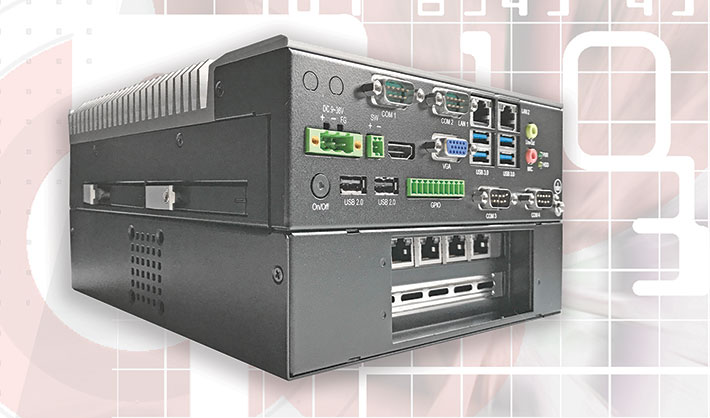
What does machine vision mean? It's using machines — computers — for tasks that come easy to humans but that machines traditionally haven't been good at. The human brain is designed to very quickly assess, comprehend, and react to visual information. We can classify, tag, and sort things based on visual information alone. We can react to visual information instantaneously.
Machines are different. Mechanical machines can perform mechanical tasks much faster than humans can, and computers can process numerical data almost infinitely faster than the human brain can. But that is changing now.
Combinations of cameras, scanners, computers and software now "recognize" visual data and use it to make instantaneous decisions regarding things like exceptions on assembly lines, packaging and labeling consistency, CT scan analysis, avoidance of a vehicle collision, and much more. The term machine vision refers to computer systems that can make these types of decisions based on visual information.
The increasing importance of machine vision
Just like any other computer system, at the center of every machine vision project is a reliable, well matched computer. Since machine vision systems are usually embedded and part of larger installations, the PC itself must be rugged, compact and ultra-reliable. For that reason, most machine visions systems use industrial Box PCs. Most are fanless to reduce air movement and potential failures, and enhance life cycle. Here is what matters in machine vision systems:
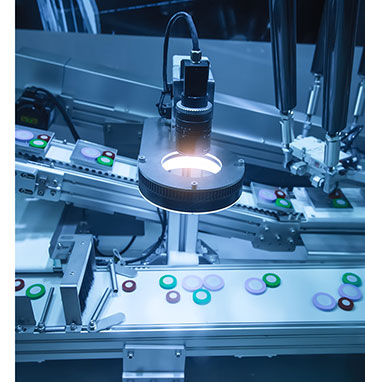
- Display optional — Depending on the application, machine vision systems may or may not have or need a display. There's no need when a machine vision system does not rely on human interaction; the system may simply take an action or issue an alert. If human interaction is needed, there may be an industrial monitor attached to the system, or the project may employ an all-in-one computer.
- Expandability — One reason why compact industrial PCs are favored for many machine vision deployments is their inherent expandability. Each machine vision system is different and takes advantage of IPCs' expansion slots and vast configuration options.
- Performance — On the CPU performance side, unlike lots of other routine embedded system tasks, machine vision projects generally require a good deal of processing performance, so it's usually higher-end Intel Core processors in such systems.
- Peripherals — Machine vision systems rely on peripherals to collect visual information. For the most part that's cameras. There may be simple cameras that capture the size or color of items on a production line. High-resolution video cameras may be used to survey store traffic. Thermal cameras may monitor food preparation areas, or scan for health parameters as workers enter a facility. Increasingly advanced X-ray cameras are used for airport security. Magnetic resonance imaging, X-Ray, computer tomography and other medical imaging devices may all be part of machine vision systems where imagery is analyzed and algorithm may alert to anomalies, recommend additional scans, suggest a path of action.
- Power over Ethernet — Cameras, of course, require power and its usually not feasible to have each use its own power supply or power cable. Instead, machine vision projects routinely use PoE, Power over Ethernet. With PoE, Ethernet serves both as data conduit as well as power delivery in one cable. Distance is rarely an issue; PoE cabling can be as long as 100 meter (330 feet).
- PCI expansion — Many machine vision interface boards use the fast and flexible PCI or PCIe bus. This provides different bandwidth options and access to a vast wealth of PCI-based cards that use the high-speed PCI serial computer expansion bus.
Scalable performance
Scalable performance is important in machine vision applications, but the required scaling range may be smaller. Teguar's standard TB-5545 industrial PC, for example, is available with no fewer than nine different processors, ranging from basic Celeron chips all the way up to high-end mobile Core processors. Machine vision systems rarely just idle along; they are always handling a high, demanding workload. So there was no need to offer low-end chips. Instead, Teguar offers a trio of powerful Intel 7th generation "Kaby Lake" 35 watt TDP Core processors.
The table below shows the processor options available for the Teguar TB-5545-MVS:
|
Teguar TB-5545-MVS available processors (See full Intel table)
|
|
Company
|
Intel
|
Intel
|
Intel
|
|
Model
|
Core I3-7101TE
|
Core I5-7500T
|
Core I7-7700T
|
|
Intel Core generation
|
7th gen "Kaby Lake"
|
7th gen "Kaby Lake"
|
7th gen "Kaby Lake"
|
|
Cores/Threads
|
2/4
|
4/4
|
4/8
|
|
Thermal Design Power
|
35 watt
|
35 watt
|
35 watt
|
|
Base frequency
|
3.40 GHz
|
2.70 GHz
|
2.90 GHz
|
|
Turbo frequency
|
NA
|
3.30 GHz
|
3.80 GHz
|
|
Intel Smart Cache
|
3MB
|
6MB
|
8MB
|
|
ECC memory support
|
Yes
|
No
|
No
|
|
Graphics
|
HD Graphics 630
|
HD Graphics 630
|
HD Graphics 630
|
|
Intel vPro
|
No
|
Yes
|
Yes
|
|
Intel TSX-NI
|
No
|
Yes
|
Yes
|
|
Intel SIPP
|
No
|
Yes
|
Yes
|
|
Intel Trusted Execution
|
No
|
Yes
|
Yes
|
|
Relative CPU cost
|
1.00
|
1.64
|
2.59
|
What may make a difference in certain applications is the availability of four special Intel technologies (vPro, TSX-NI, SIPP, and Trusted Execution) included in some of the available processors but not in others. Here's what that means:
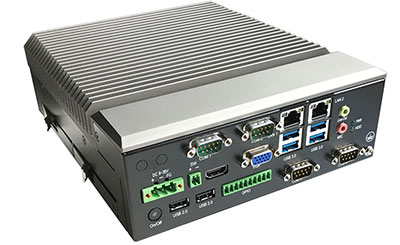 - The extra security and manageability capabilities of vPro, especially, are required in many enterprise deployments.
- TSX-NI (Transactional Synchronization Extensions New Instructions) helps make parallel operations more efficient via improved control of locks in software,
- SIPP (Stable Image Platform Program) allows deployment of standardized, stable image PC platforms for at least 15 months, and
- Trusted Execution technology provides security capabilities such as measured launch and protected execution, and may thus also be an enterprise requirement.
As far as "relative CPU" cost goes, it means that while Intel charges its customers 1X dollars for the low-end processor available for the TB-5545-MVS, it charges 2.5 times as much for the high-end processors. This, of course, has an impact on overall system cost.
And note another item that may make a difference: some of the CPUs support ECC memory and others do not. ECC stands for "Error Correction Code" RAM that protects against data corruption by automatically detecting and fixing memory errors.
Now let's take a closer look at the TB-5545-MVS sample unit Teguar sent RuggedPCReview.com for evaluation.
Teguar TB-5545-MVS — Compact design, super-solid construction
Our test unit, the Teguar TB-5545-MVS with 2x Expansion, measures 8.6 x 7.5 x 4.5 inches and weighs 8.7 pounds. That's remarkably compact for an IPC system this powerful, small enough to mount the system just about anywhere. In terms of design, when it comes to industrial Box PCs, form follows function more than in any other type of computer. There's steel to mount the boards on, and lots of solid, finned aluminum that soaks up and dissipates the heat generated by the processor and ancillary electronics. Why so much of it? Because the processors used in the TB-5545-MVS generate as much as 35 watt of heat that needs to be removed, more than twice as much as in even high-performance rugged laptops and tablets that generally max out at 15 watts.
It is therefore I/O ports and thermal management that drive the TB-5545-MVS's design. About the only thing not dedicated to those two primary functions is the DIN rail mount option, a standard used for mounting industrial control equipment inside equipment racks.
The picture compilation below shows the Teguar TB-5545-MVS with 2x Expansion from the top and all four sides:
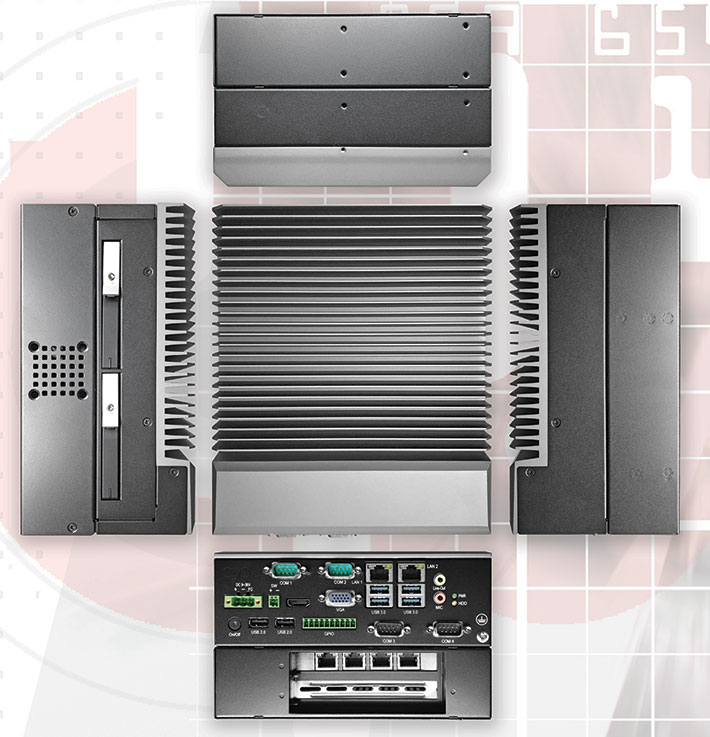
On the TB-5545-MVS, all I/O is all edge-mounted, with ports facing front and back. The sole exception are the system's two SATA port slide-in caddies located on the left side. Each can accommodate a 2.5-inch SATA solid state or hard drive. The system's RAID controller supports, if so desired, RAID 0 (striping) or RAID 1 (mirroring) on dual drive systems. Our test unit came with dual Transcend SSD420 solid state drives.
Disassembling the unit is rarely necessary unless one wishes to reconfigure one or more of the numerous PC-style jumpers or use some of the extra connectors for additional I/O. The unit's motherboard follows the desktop PC tradition of providing plentiful plugs, slots, and connectors for optimal flexibility and ease of replacing or upgrading components such as RAM, wireless connectivity modules, and solid state storage modules.
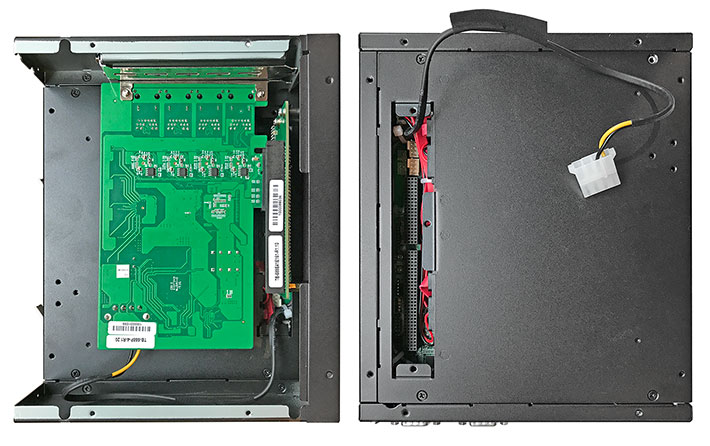
Above you can see the 2x Expansion chassis (left) that is mounted underneath the TB-5545-MVS separated from the main unit. Many machine vision projects need special interfaces and special functionality that are best handled via add-on cards. And many of such cards use the PCIe interface.
Teguar provided PCIe by putting a steel basement underneath the default TB-5545 that adds just under two inches of height and a couple of pounds of weight. Internally, the addition is facilitated via a riser card connector that supports PCIe X4 and PCIe x16 signals. The connector can then be used for a PCIE x4 card and a PCIe x16 card. Our test unit came with an optional X4 PoE card installed. This can be used to connect remote cameras via Ethernet and provide them with power.
PCI stands for "Peripheral Component Interconnect," a local bus standard spec that Intel created in the early 1990s as a much faster replacement for the earlier ISA, EISA, MCA and VLB bus standards. PCIe, also called PCI Express, was launched in 2004 as an even faster replacement/alternative for PCI and a number of other standards.
Below you can see inside the main body of TB-5545-MVS, with the bottom flipped open. Mounted on that bottom plate are the two quick-release 2.5-inch SATA mass storage bays, in our system each equipped with a 64GB Transcend SSD. We passed on separating the massive finned aluminum top that acts as a heat sink and passive thermal cooling system because we didn't want to disturb the crucial thermal transfer pads that conduct heat away from electronic components to the heat spreader.
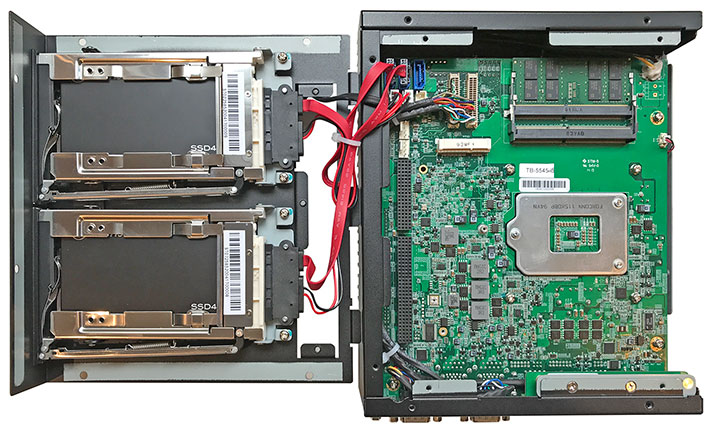
The motherboard is secured directly onto the system's aluminum heat spreader instead of the more common IPC mounting method onto a bottom steel plate.
Either way, one look at it becomes clear that this is definitely an industrial-grade multi-purpose device.
Standard equipment is dual RJ45 LAN jacks, quadruple programmable legacy COM ports, quadruple USB 3.0 Type-A ports and dual 2.0 Type A USB, separate audio ports for speaker audio in and out, digital I/O (4x in, 4x out), and for video VGA and HDMI.
Below is the front elevation of the of the TB-5545-MVS with all that standard I/O, sitting on top of the 2x Expansion with its four PoE-enabled RJ45 LAN and power ports and the unfilled PCIe X16 slot in our eval unit
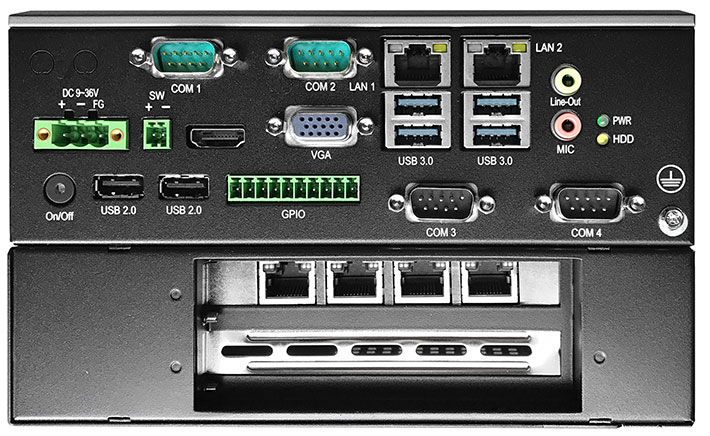
As far as ruggedness goes, it's different for embedded systems. They aren't routinely dropped like mobile systems, so no drop spec. As embedded systems, likewise, they're not generally exposed to rain and such, hence no ingress protection rating. What does matter is thermal performance, and here the TB-5545-MVS with the 2x Expansion is designed to be used in a temperature range of -4 to 140 degrees Fahrenheit (-20 to 60 degrees Centigrade), and the entire unit is about as rock-solid as it gets.
Optimizing performance: selecting the right processor
As discussed and shown in the CPU comparison table earlier in this report, Teguar offers three different processor options for the TB-5545-MVS machine vision IPC. This allows customers to optimize performance for their applications by getting the right processor for the job. No need to pay for too much, but also guard against unwise skimping by going for the lowest cost processor option. It really does pay to give that some thought.
 Intel, of course, doesn't make it easy to figure out what's needed. The "good/better/best" rule of thumb when describing their Core i3/i5/i7 processors applies to some extent, but there's much more to selecting the right chip. Intel, of course, doesn't make it easy to figure out what's needed. The "good/better/best" rule of thumb when describing their Core i3/i5/i7 processors applies to some extent, but there's much more to selecting the right chip.
And even that is not the end of all the obfuscation. It doesn't look, for example, that the difference between three different Core processor with the exact same Thermal Design Power rating of 35 watts would be much.
And yet they can be quite different. That's because, in this instance, one is a dual-core design with hyper-threading and no turbo boost, the second a quad-core design without hyper-threading but with turbo boost, and the high-end chip is a quad-core version with eight threads and turbo. This means that despite nominally having the same thermal design power, there is a rather larger performance difference between these three chips.
Ideally we could benchmark a device like the Teguar TB-5545-MVS with all of its available processor options. That would show where each configuration is within the performance window Teguar offers. But even then, there'd be additional variables such as the type and amount of RAM and the type of mass storage, both of which can greatly influence performance.
As is, we can provide an idea of the relative performance of the TB-5545-MVS compared to a few other industrial computer systems with different processor types. That shows the approximate performance space these processors provide. Below are the results of our bench testing with two of our standard benchmark suites, Passmark Software's Performance Test 6.1 and CrystalMark for cross-checking and emphasis on single core performance. For comparison we added the results of the 15-inch Teguar TS-5010 we recently tested, as well as those of two similar industrial PCs from ARBOR and a smaller industrial unit from OnLogic:
|
Teguar TB-5545-MVS performance
|
|
PERFORMANCE COMPARISON
|
Teguar
|
Teguar
|
ARBOR
|
ARBOR
|
OnLogic
|
|
Model
|
TB-5545-MVS
|
TP-5010-15
|
FPC-7901
|
FPC-9002
|
Karbon 300
|
|
|

|

|

|

|

|
|
Model
|
Machine Vision IPC
|
Panel PC
|
Industrial PC
|
Industrial PC
|
Industrial PC
|
|
Year tested
|
2020
|
2018
|
2017
|
2018
|
2019
|
|
Processor Type:
|
Intel Core i5
|
Intel Core i5
|
Intel Core i5
|
Intel Core i7
|
Intel Atom
|
|
Processor Model
|
7500T
|
6200U
|
7500T
|
7700T
|
X7-E3950
|
|
Processor Code
|
Kaby Lake
|
Skylake
|
Kaby Lake
|
Kaby Lake
|
Apollo Lake
|
|
Cores/threads
|
4/4
|
2/4
|
4/4
|
4/8
|
4/4
|
|
CPU Speed
|
2.70GHz
|
2.30GHz
|
2.70GHz
|
2.90GHz
|
1.60GHz
|
|
Turbo Speed
|
3.30GHz
|
2.80GHz
|
3.30GHz
|
3.80GHz
|
2.00GHz
|
|
Thermal Design Power (TDP)
|
35 watts
|
15 watts
|
35 watts
|
35 watts
|
12 watts
|
|
CPU Mark
|
4,260.9
|
4,101.8
|
4,902.0
|
8,770.9
|
2,374.5
|
|
2D Graphics Mark
|
255.9
|
330.7
|
405.6
|
327.9
|
128.1
|
|
Memory Mark
|
671.8
|
1,201.7
|
1,413.3
|
1,916.2
|
461.0
|
|
Disk Mark
|
5,223.5
|
2,951.3
|
1,941.5
|
2,925.7
|
2,946.2
|
|
3D Graphics Mark
|
569.4
|
397.9
|
820.0
|
939.0
|
138.7
|
|
Overall PassMark 6.1
|
2,420.2
|
2,008.1
|
2,120.9
|
3,456.8
|
1,347.9
|
|
ALU
|
53,407
|
43,306
|
53,225
|
70,425
|
33,726
|
|
FPU
|
47,203
|
43,896
|
45,463
|
59,885
|
30,983
|
|
MEM
|
51,121
|
37,340
|
75,320
|
34,865
|
24,160
|
|
HDD
|
30,655
|
32,081
|
31,578
|
31,856
|
44,094
|
|
GDI
|
11,366
|
13,125
|
14,874
|
12,264
|
4,988
|
|
D2D
|
4,307
|
5,678
|
4,142
|
5,083
|
1,776
|
|
OGL
|
7,749
|
11,811
|
10,372
|
12,264
|
3,468
|
|
Overall CrystalMark
|
205,808
|
187,237
|
234,974
|
274,715
|
143,195
|
The results of the benchmark testing are in no way to be viewed as "better" or "worse," but simply as a guide to understanding what relative performance can be expected from different processor types.
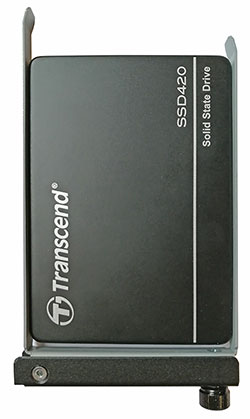 First, note that even two machines with the exact same processor may clock in with different benchmark results. It's not unusual to see plus/minus 10-20% difference. First, note that even two machines with the exact same processor may clock in with different benchmark results. It's not unusual to see plus/minus 10-20% difference.
Second, always determine what overall processor architecture an Intel chip actually belongs to. Chips based on Intel Core architecture will always be much more complex and considerably more powerful than anything based on the company's Atom architecture, no matter how many cores the Atom chip has.
Third, when comparing Intel Core processors, even those with Celeron and Pentium names, the number of cores and threads greatly matters. For an example, see the vast performance difference between the two listed ARBOR machines, one with four (7500T), one with eight threads (7700T). Teguar offers those two processors as well, so the same would apply there.
Fourth, while not shown in the benchmark table, keep in mind that "turbo boost" can make a big difference in peak performance. Two of the processor options Teguar offers have turbo boost, one does not. Depending on the intended use, that can make a significant difference.
Finally, keep in mind that the type of mass storage can make a big difference in overall performance. Comparatively sluggish hard disks have long since been replaced by much faster solid state disks, but not all solid state disks are the same. There's a big performance difference between different types, technologies, and brands.
Teguar TB-5545-MVS — Summary
With their TB-5545-MVS, Teguar presents a meticulously built and highly configurable IPC compact workhorse computer suitable for a very wide range of machine vision applications as well as edge computing and quality control deployments. Designed and engineered for fanless operation, the TB-5545-MVS operates silently and reliably, and without any disrupting, contaminating forced air movement.
Available with a choice of 35-watt class Intel "Kaby Lake" Core processors, the TB-5545-MVS offers scalable performance to match intended applications.
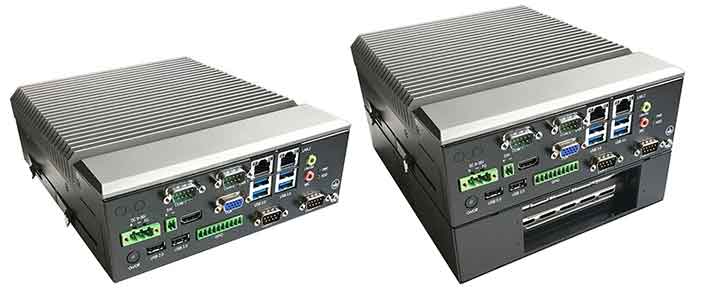
The basic Teguar TB-5545-MVS offers rich default onboard I/O including digital I/O and configurable legacy serial ports. It supports both standard 2.5-inch SATA solid state or hard disks in two externally accessible slide-in bays, as well as Mini-PCIe-based storage modules.
Teguar offers the TB-5545-MVS with 2X or 4X expansion chassis that adds single or double PCIE x4 card and a PCIe x16 card connectors via a riser card. Our test unit came with an optional X4 PoE card installed. This can be used to connect remote cameras via Ethernet and provide them with power. Teguar also offers an optional card with eight USB 3.0 ports, or customers can install their own PCIe expansion cards.
With its wide-range power input (9 to 36 Volt DC) and rugged all steel/aluminum housing, the fanless Teguar TB-5545-MVS can easily operate in even the harshest industrial environments. —
Conrad H. Blickenstorfer, July 2020
Teguar TB-5545-MVS fanless industrial PC Specs
| Added/changed |
Full review 07/2020
|
| Type |
Machine vision box computer
|
| Processors |
Intel "Kaby Lake" 7th generation i3-7101TE OR
Intel "Kaby Lake" 7th generation i5-7500T (review unit) OR
Intel "Kaby Lake" 7th generation i7-7700T
|
| Processor speed |
i3-7101TE -- 3.4GHz
i5-7500T -- 2.70GHz base frequency/3.30GHz max turbo frequency
i7-7700T -- 2.90GHz base frequency/3.80GHz max turbo frequency
|
| TDP |
All 35 watt |
| Thermal |
Fanless passive cooling (fan cutouts for optional fans in expansion units)
|
| OS |
Windows 10 Pro, Windows 10 IoT Enterprise, Linux
|
| Graphics |
Intel HD Graphics 630 |
| Memory |
4G to 32GB DDR4 SO-DIMM in two user-accessible sockets |
| Storage |
Two 2.5" SATA-3 HDD/SSD bays, RAID 0/1 support
|
| Expansion slots |
2 x full-size Mini-PCIe, 1 x PCIe, optional 2 or 4 expansion Slots with PCIe x16 and PCIe x4 support
|
| Housing |
Steel and aluminum housing; wall mount, DIN rail mount option |
| Temperature |
Core i3 and Core i5: -4° to 140°F (-20° to 60°C)
Core i7: -4° to 122°F (-20° to 50°C)
|
| Humidity |
10 to 90% non-condensing |
| Vibration |
NA
|
| Spill Resistance Class |
NA
|
| Certifications |
CE / FCC Class A Certification |
| Size |
8.75 x 7.5 x 2.4 inches (222 x 190 x 61 mm) TB-5545-MVS
8.75 x 7.5 x 4.5 inches (222 x 190 x 114 mm) TB-5545-MVS with 2x expansion
8.75 x 7.5 x 6.6 inches (222 x 190 x 167 mm) TB-5545-MVS with 4x expansion
|
| Weight |
8.7 pounds (3.95 kg) with 2X Expansion and quad-port PoE RJ45 card
|
| Power |
3-pin DC 9~36Volt DC Power Input |
| Interface |
2 x USB 2.0 type A
4 x USB 3.0 type A
1 x RS-232/422/485 COM1 (default RS-232)
2 x RS-232 COM2 and COM4
1 x RS-422/485 COM3 (default RS-485)
1 x HDMI
1 x VGA
2 x RJ45 GbE
1 x GPIO 8-bit digital I/O (4 x DI, 4 x DO)
1 x Audio Line-In, 1 x Audio Line-Out, 1 x Mic-In
Optional: Expansion card with 8 x USB 3.0
|
Price |
Inquire |
| Web page |
Teguar TB-5545-MVS
|
| Product data sheet |
 Teguar TB-5545-MVS spec sheet (PDF) Teguar TB-5545-MVS spec sheet (PDF) |
 Teguar Computers
Teguar Computers
1-800-870-7715
www.teguar.com
|






